We'd like to remind Forumites to please avoid political debate on the Forum... Read More »
📨 Have you signed up to the Forum's new Email Digest yet? Get a selection of trending threads sent straight to your inbox daily, weekly or monthly!
Wet floor under vinyl
Options
Comments
-
OWsurveyors said: The OP should consider contacting an Independent Remedial Surveyor (preferably one who is a member of the PCA)Good grief... The Property Care Association is the trade body representing the damp proofing industry. The same outfit that peddles snake oil "cures" for damp. i.e. Chemical injection of walls, waterproof render/plaster (strange that it is always up to a height of 1.2m, even when on an upper floor). Avoid anyone that uses one of those damp meters with probes poked in to the wall and arbitrarily diagnoses "rising damp" needs to be kept at arms length, preferably over a long drop where they can reconsider life choices on the way down.If one is to call in a qualified and independent surveyor (if there is such a thing with links to the PCA), make sure he/she has a contact address on their web site and doesn't rely on just a mobile phone or email contact - A reputable company will have a land line and physical address in a prominent position.CSRT qualification - What is that....A three day training course run by the PCA, and not overseen by any recognised training body. A certification that is of less value than the HSE First Aid at Work course (another 3 day course, but one that is nationally recognised, and saves lives).Sorry, but in my opinion, the whole damp proofing and timber treatment industry is little more than a bunch of cowboys peddling snake oil and useless treatments that just hide a problem rather than fixing the issue at source.Her courage will change the world.
Treasure the moments that you have. Savour them for as long as you can for they will never come back again.3 -
Ah, I see you are clearly a Heritage House cult member, brain washed by the teachings of Peter Ward 😉
I try not to be so black and white in my thinking. The electronic moisture meter can be useful to plot a moisture profile quick and easily if one is mindful of its limitations and if used diligently alongside knowledge, experience and other forms of testing. Nobody here was suggesting any damp proofing/chemical injection or indeed “rising damp”. I haven’t come here to debate the existence of the latter or the curricular content of the CSRT. I merely wish to guide the OP into seeking the correct advice as you originally suggested he contact “a builder” in order to advise him on matters concerning a DPC.
You do however have a right to your opinion and you needn’t apologise for it.
0 -
No fan of Peter Ward - I disagree with some of his writings about insulating old buildings for starters. And yes, if moisture meters are used correctly and mindful of their limitations along with the material being poked, they can aid in locating the source of damp. Unfortunately, many within the industry blindly prod and diagnose without the understanding.Back to the OP's problem - A builder will be able to look into the holes already chased out, see if there is a DPC and/or if it has been compromised, and then quote for remedial work.Her courage will change the world.
Treasure the moments that you have. Savour them for as long as you can for they will never come back again.1 -
Hello All.
Thanks for the replies been a pretty stressful week. Do you think the DPC has been compromised where the pipes run under the wall? I have had a company that do rising damp but because of the possibility of a leak it is difficult to tell. The chap users a surface moisture meter and a pin one around the area and there was moisture in the walls but again could be down to the leak. Company is coming out to test the floor for asbestos on Monday and Plumber coming Tuesday to pressure test the system and the damp guy coming back Tuesday as well as when i have a feel in the hole I can feel what feels like cut rigid plastic sticking out could this be where the compromise be. This is turning into a house of horrors for me. House was built in the late 70s 80s I will post pics of the external damp proof.0 -
Updated pics
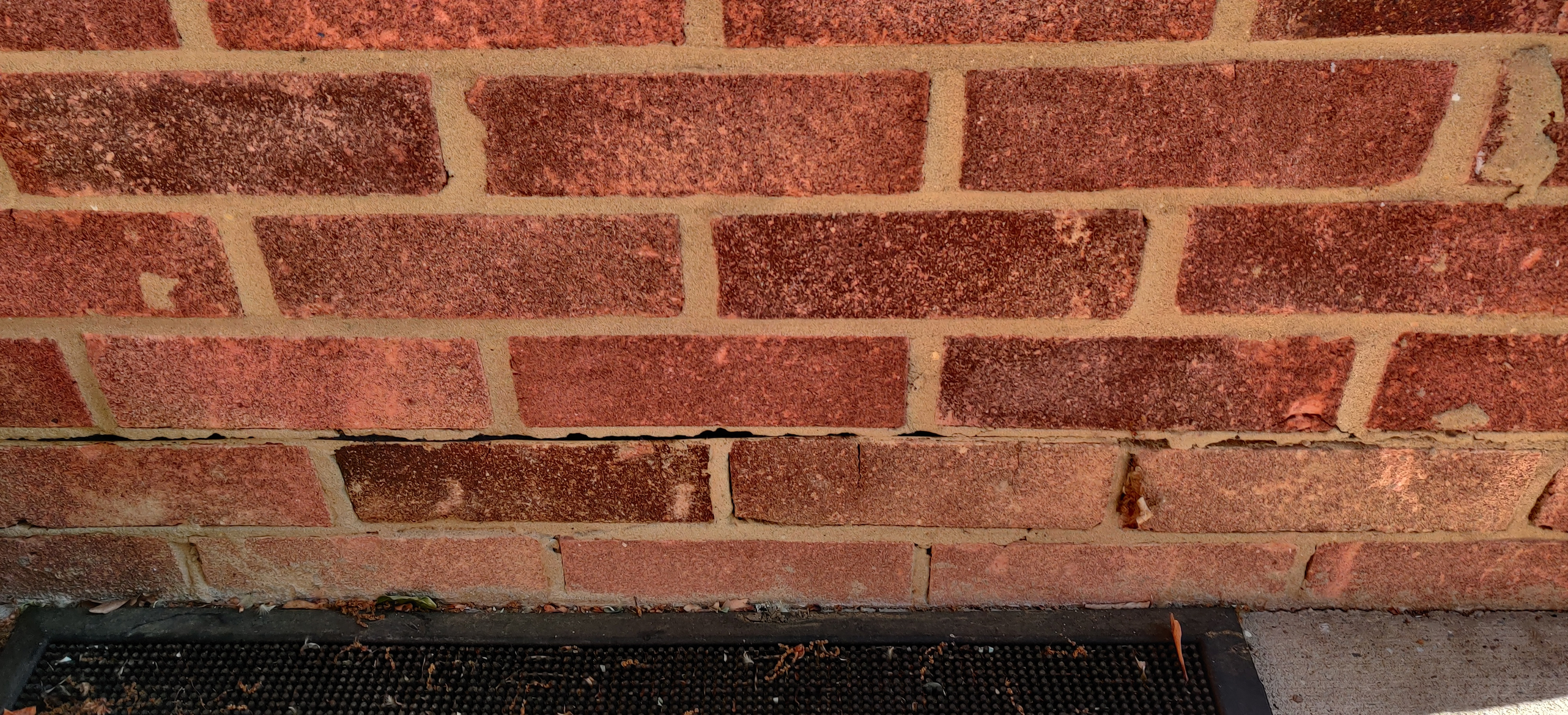
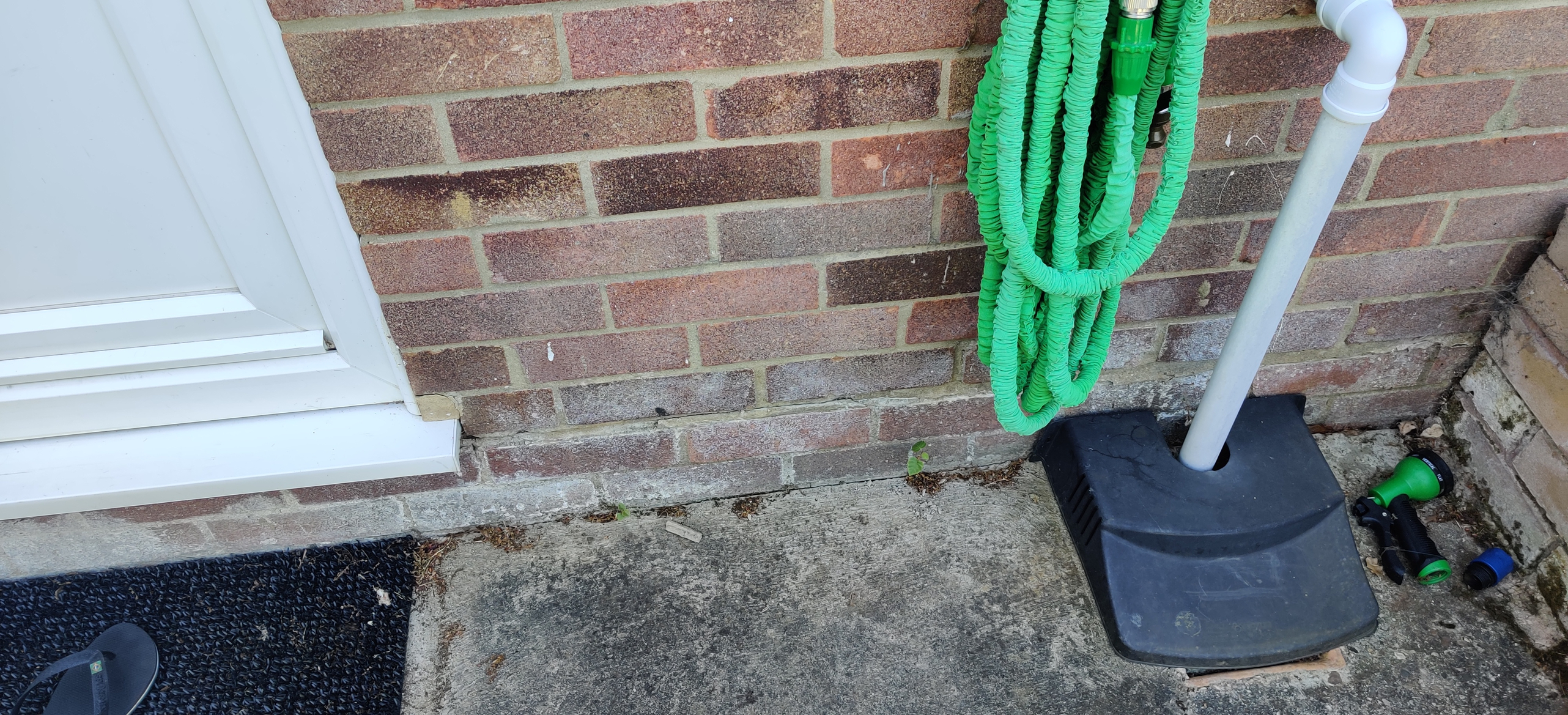
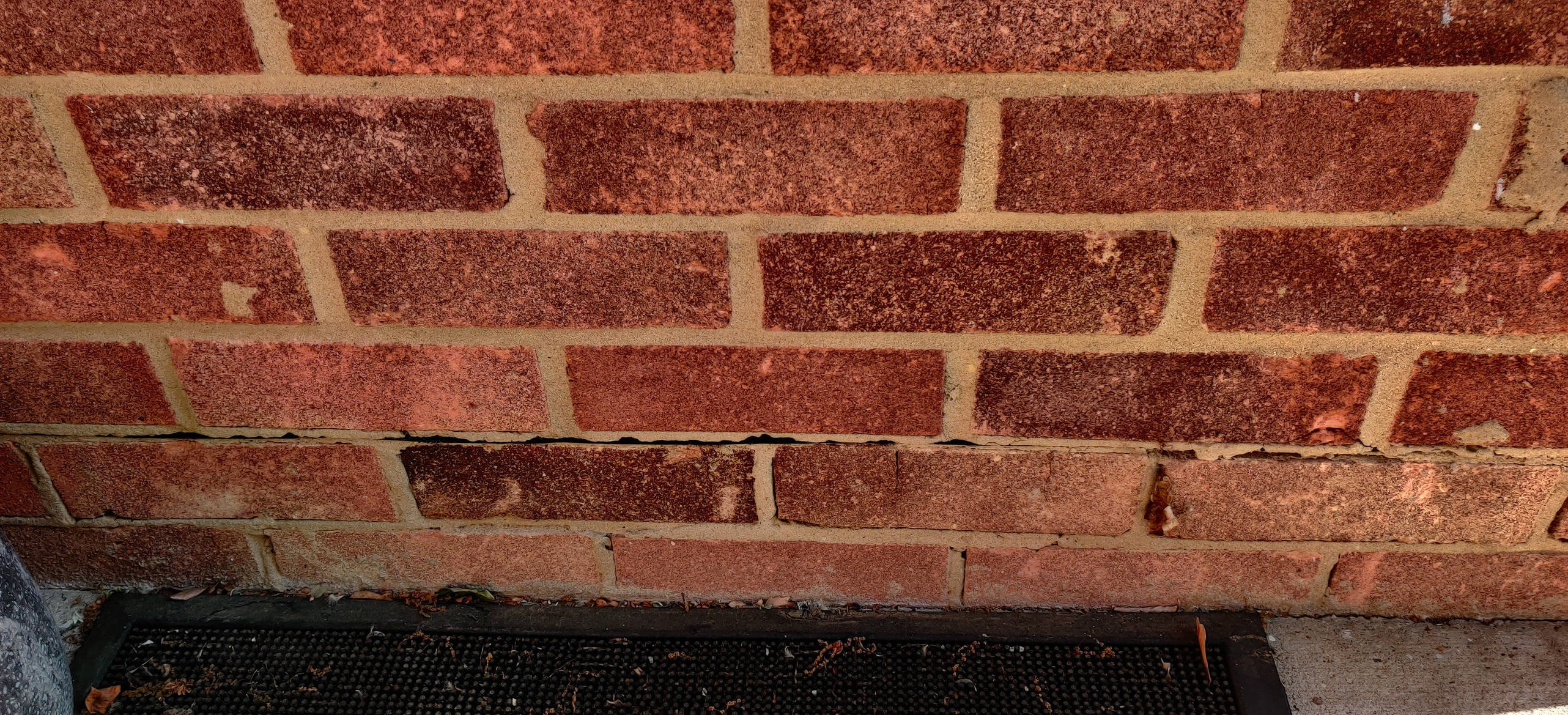
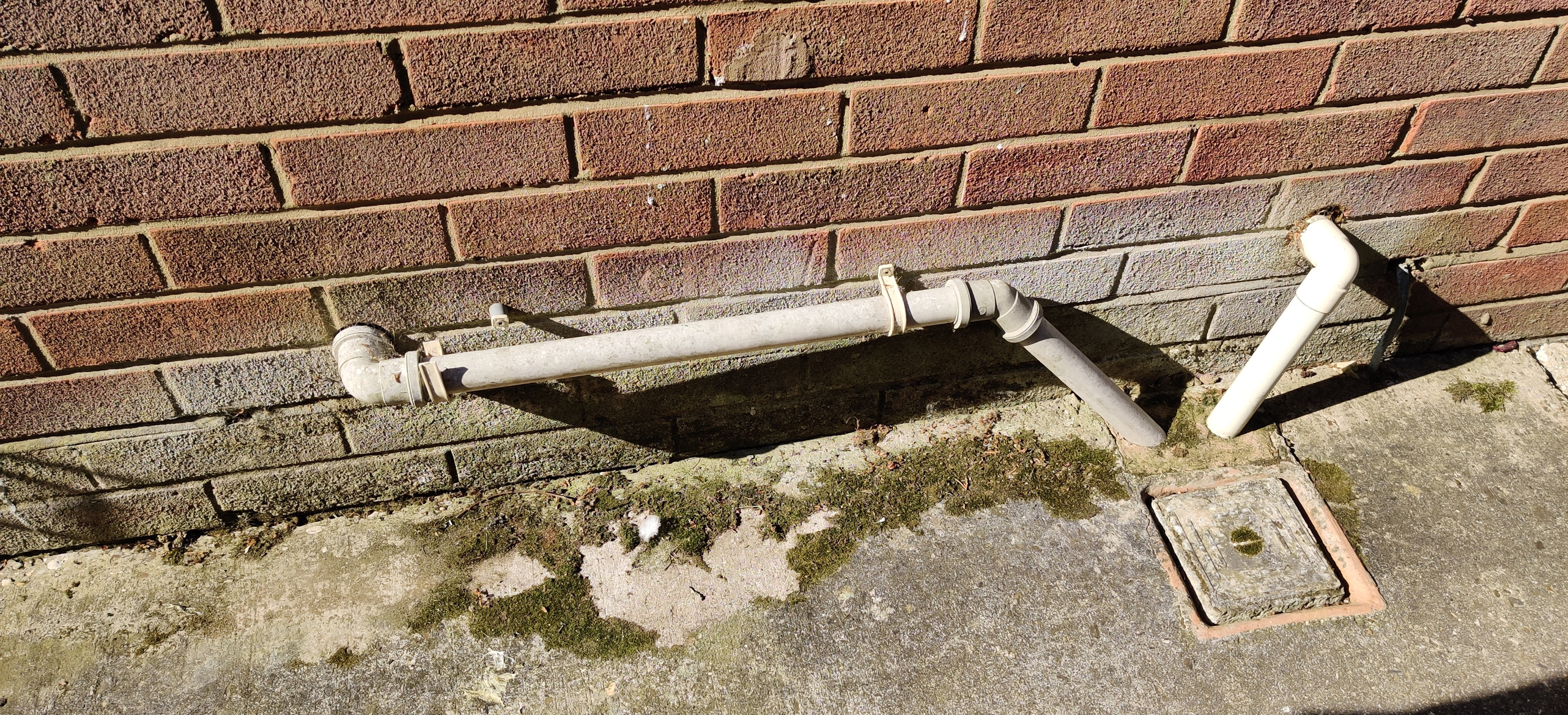 0
0 -
I have taken some pictures from within the hole andhand highlighted what I think I felt the other day. All thoughts and ideas are greatly appreciated
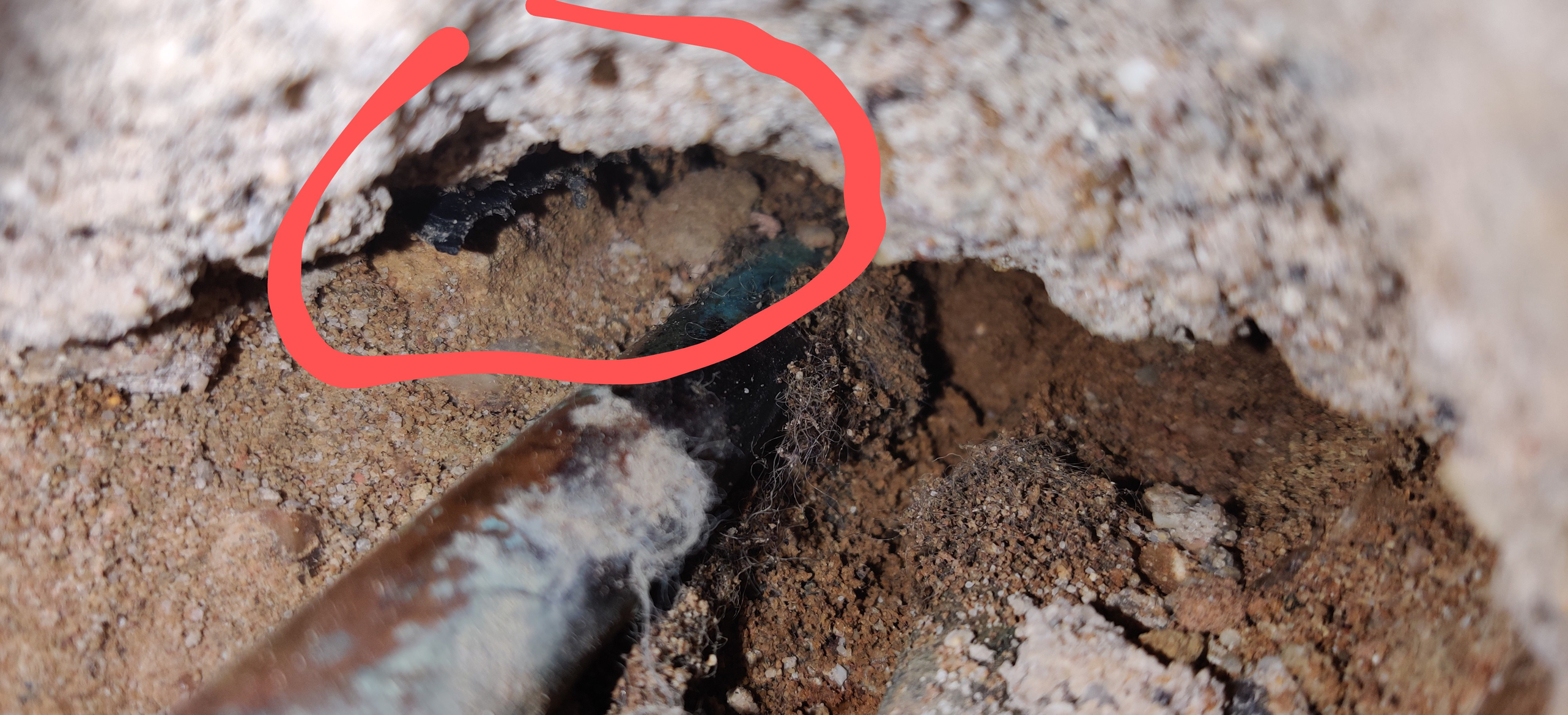
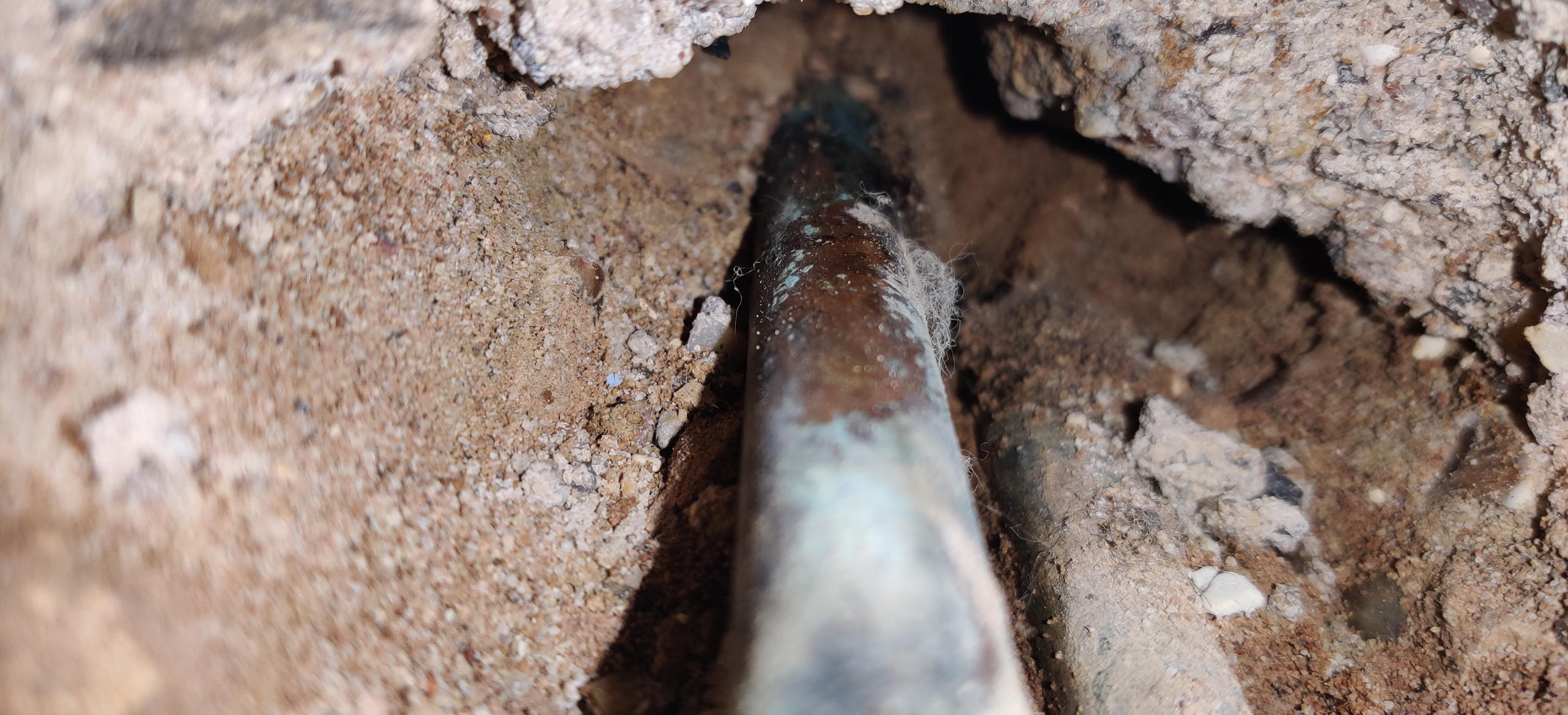
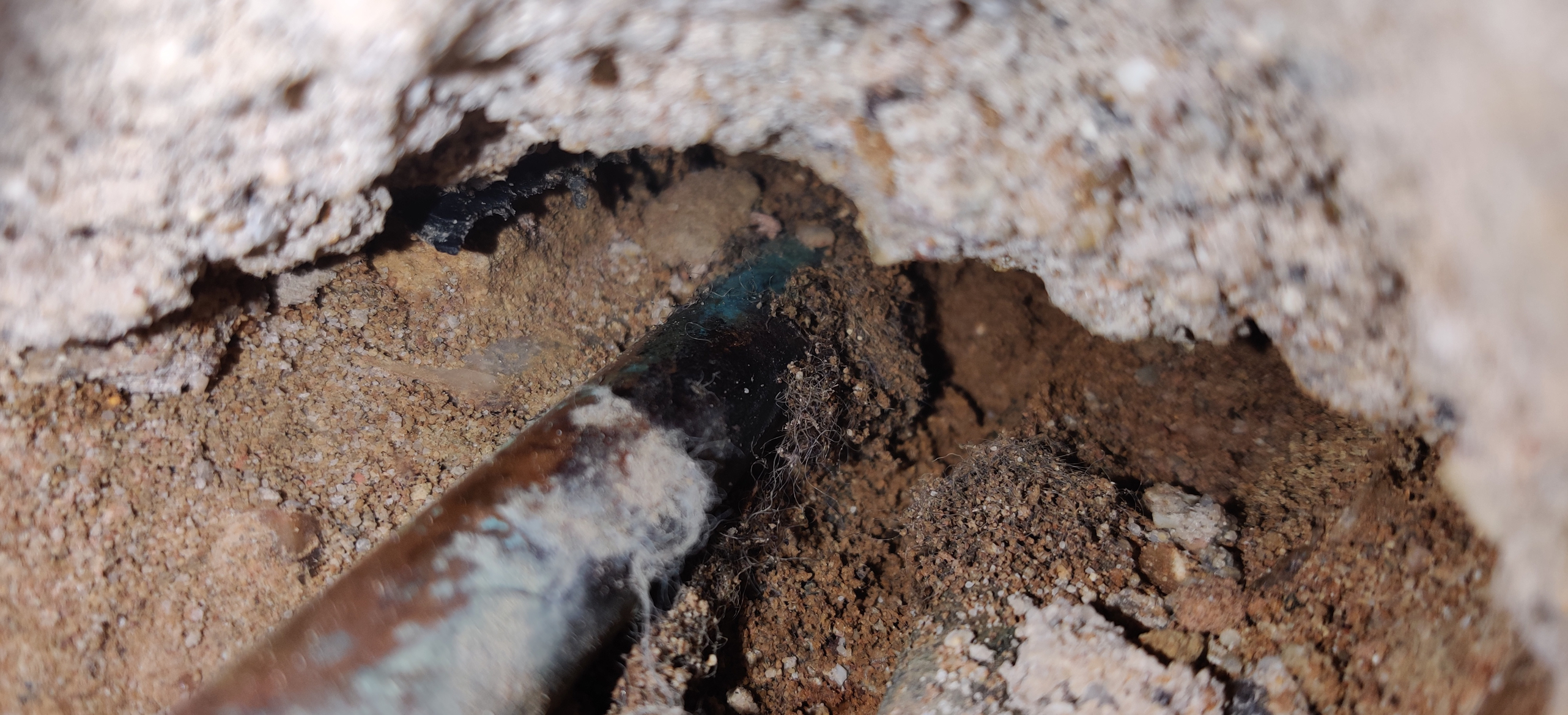 0
0 -
alibob22 said: I have had a company that do rising damp but because of the possibility of a leak it is difficult to tell....when i have a feel in the hole I can feel what feels like cut rigid plastic sticking out could this be where the compromise be. This is turning into a house of horrors for me. House was built in the late 70s 80s I will post pics of the external damp proof.You have a fairly recent build property, and the DPC in the exterior wall is visible two bricks up from the ground. Absolutely no reason to suspect "rising damp" or penetrating damp from the outside - You have a solid house there (from the outside at least).The concrete floor will typically be a layer of concrete some 75mm thick over hardcore, a sheet of real thick plastic for a Damp Proof Membrane, and then another 75mm layer of concrete. From one of your earlier photos, there is what looks like a strip of black plastic over the copper pipes - Is this what you are feeling ?If it is indeed the DPM originally fitted when the floor was constructed, then that could well be a source of damp. There are ways to fix the floor where the pipes are. A decent builder will be able to advise, but any work done needs to be done in conjunction with the plumbing.Ideally, the copper pipes need to be wrapped in plastic to stop them from coming in to contact with cement (which would lead to corrosion of the copper). The trench would then need to be sealed against ingress of damp, most likely with a bitumastic sealant, and then filled in with a screed (sand/cement mix). Shouldn't be too expense - If it is only a days worth of work, I'd be surprised if it cost more than a couple of hundred.One or two might suggest coating the entire floor with a waterproof sealant - That would push any damp in the concrete slab in to any internal walls built straight on to the slab, and eventually cause the skirting board to rot and paint/wallpaper to bubble & flake off.Her courage will change the world.
Treasure the moments that you have. Savour them for as long as you can for they will never come back again.0 -
Hi thanks for the feedback I am getting quotes to re run the central heating pipes externally with drops from the floor above so that solves that. Not sure if you saw the most recent pics and you can see the plastic I highlighted which is what I can feel I believe. When you say the trench the you mean the whole channel along that wall? The water meter went nuts against the wall on both sides inside the lounge and kitchen + the leak still is yet to be found if there is one. Just getting more and more concerned. Might get a builder round to discuss0
-
Just as a matter of interest, and I am not an expert by any means, approximately 7 days have elapsed since your first post, and given the extremely dry weather we have been experiencing of late, I wonder if you have noticed any improvement in the damp areas that are now exposed?I had a similar experience a few years ago with a conservatory extension, and the solution which worked was to create what I believe was called a floating floor. This comprised from memory a very strong blue membrane (visqueen?) over which a layer of polystyrene was placed followed by wayroc boards. It did raise the level of the floor and I guess that may not be an option for you.I also had a case of unprotected pipes (gas not central heating) in my kitchen being installed by the original builder having no protection resulting in a gas leak a few years later caused by footfall in the kitchen and concrete coming into contact with the pipes causing a pinprick hole.Anyway, best of luck in getting it sorted.1
-
There has yes but it looks like it is just surface moisture if I am honest if the moisture meter is anything to go by the plaster and walls are still soaking plus in the same location as the hole there are still patches working away from it.0
Confirm your email address to Create Threads and Reply

Categories
- All Categories
- 351.2K Banking & Borrowing
- 253.2K Reduce Debt & Boost Income
- 453.7K Spending & Discounts
- 244.2K Work, Benefits & Business
- 599.2K Mortgages, Homes & Bills
- 177K Life & Family
- 257.6K Travel & Transport
- 1.5M Hobbies & Leisure
- 16.1K Discuss & Feedback
- 37.6K Read-Only Boards




